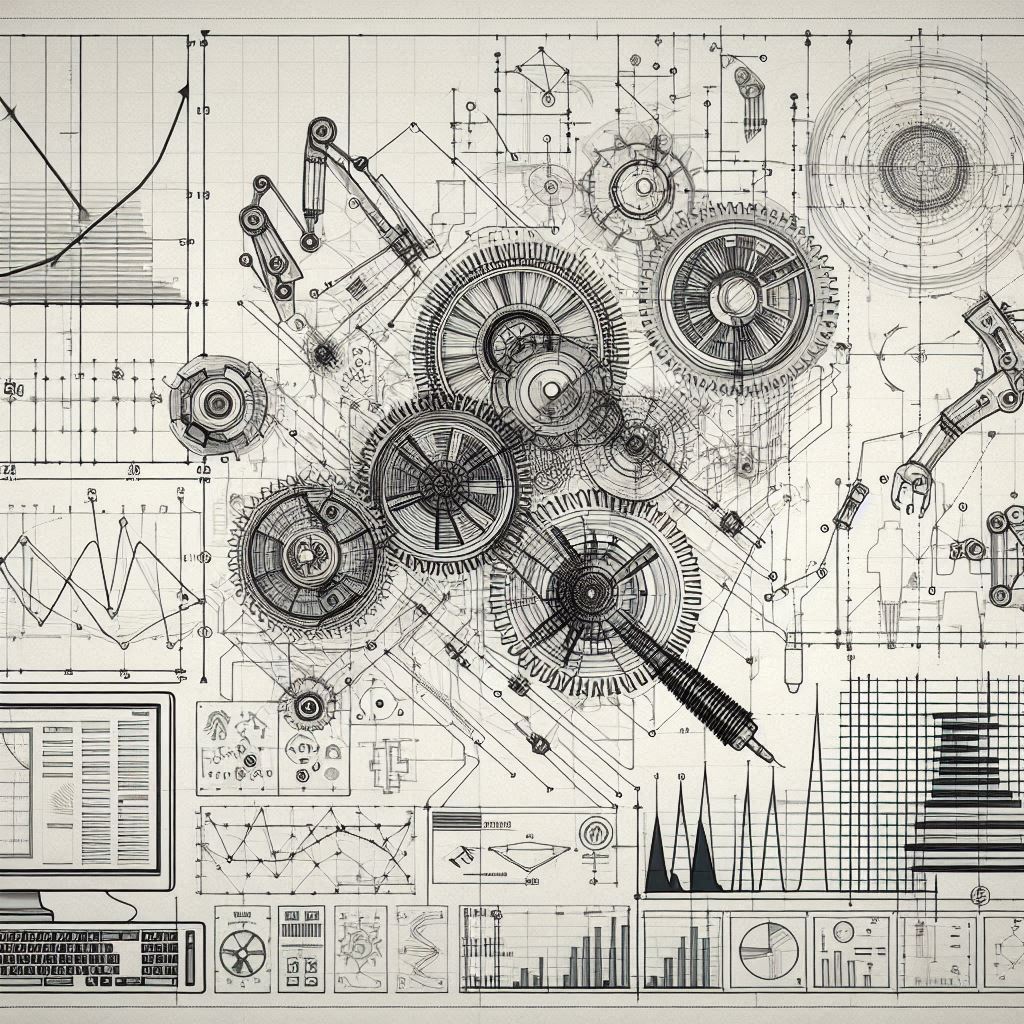Computer-Aided Analysis: Enhancing Mechanical System Dynamics Through Simulation and Optimization
1. Introduction to Computer-Aided Analysis
Computer-Aided Analysis (CAA) has transformed mechanical engineering, particularly in the study of system dynamics. It enables engineers to simulate, analyze, and optimize mechanical systems with high precision. By leveraging computational power, CAA tools facilitate efficient modeling, simulation, and performance optimization. This blog explores CAA methodologies, applications, and advancements in mechanical system dynamics.
2. The Role of Computer-Aided Analysis in Mechanical Engineering
Mechanical systems are inherently complex, with numerous interacting components and dynamic forces. Traditional analytical methods often struggle to capture these intricacies. Computer-Aided Analysis provides powerful tools for detailed modeling and simulation, enabling engineers to visualize and analyze system behavior under various conditions. CAA plays a vital role in improving design accuracy, optimizing performance, and reducing failure risks.
3. Key Components of CAA
3.1 Modeling
Creating a mathematical model is the first step in Computer-Aided Analysis. These models use differential equations to describe forces, motion, and interactions within the system.
3.2 Simulation
Once a model is established, simulation tools predict system behavior over time. These simulations can account for various factors. These include material properties, external forces, and boundary conditions.
3.3 Analysis
CAA facilitates both static and dynamic analysis. Static analysis examines the system under steady-state conditions. Dynamic analysis investigates how the system responds to time-dependent inputs.
3.4 Optimization
With simulation capabilities, engineers can optimize system parameters. This achieves desired performance metrics. For example, they can minimize weight while maximizing strength.
4. Analytical Methods in Computer-Aided Analysis
4.1 Finite Element Analysis (FEA)
FEA is a powerful numerical method used in Computer-Aided Analysis. It divides a system into finite elements, solving equations for each element to predict stress distribution, structural deformation, and heat transfer.
4.2 Applications of FEA
FEA is widely used for stress analysis. It helps determine stress distribution in mechanical components. This identifies potential failure points. Engineers also use it for thermal analysis. They simulate heat transfer to ensure components operate within safe temperature ranges. Additionally, FEA assists in vibration analysis. It helps understand the vibrational characteristics of structures.
4.3 Multibody Dynamics (MBD)
MBD analyzes rigid and flexible bodies interacting through mechanical joints. This approach is essential for robotics, automotive systems, and machinery design.
4.4 Key Features of MBD
MBD allows for kinematic analysis. This analyzes motion without considering forces. It provides insights into component movement. Dynamic analysis incorporates forces, predicting system responses to external loads. This helps optimize designs for performance and safety.
5. Computer-Aided Formulation of Equations of Dynamics
Formulating equations of motion is critical in CAA. Traditionally, this process was manual and error-prone. Modern software tools can automate this task, significantly reducing time and effort.
5.1 Automated Equation Generation
CAA tools automate the formulation of equations of motion, using methods such as:
1. Lagrangian Mechanics: Utilizes energy principles for modeling complex systems.
2. Newton-Euler Methods: Applies Newton’s laws to describe mechanical motion.
5.2 Benefits of Automated Formulation
1. Accuracy: Reduces human error in equation derivation.
2. Efficiency: Accelerates model development.
3. Flexibility: Easily adapts to design modifications.
6. Numerical Methods in Dynamics
Numerical methods are essential for solving equations of motion. These methods provide approximate solutions for complex equations.
6.1 Common Numerical Techniques
The Euler method is straightforward. It is suitable for simple systems. Runge-Kutta methods are more advanced. They provide greater accuracy for solving differential equations. Finite difference methods approximate derivatives using differences. These are useful for time-dependent problems.
6.2 Applications of Numerical Methods
Numerical methods assist in time history analysis. Engineers simulate how a system evolves over time. This provides insights into transient behavior. Additionally, they help assess system stability under various operating conditions. This ensures safe operation.
7. Interdisciplinary Problems in Mechanical System Dynamics
Mechanical system dynamics often intersect with other fields, including electrical and civil engineering. These interdisciplinary approaches enhance the design and performance of mechanical systems.
7.1 Examples of Interdisciplinary Applications
Mechatronics integrates mechanical, electrical, and software engineering. This creates intelligent systems, such as robotics and automated machinery. Structural dynamics studies how structures respond to dynamic loads. This is crucial for designing buildings and bridges that can withstand earthquakes and other forces.
8. Synthesis and Optimization of Mechanical Systems
The ultimate goal of Computer-Aided Analysis is optimization—enhancing system performance, reliability, and cost-effectiveness. Engineers synthesize multiple design parameters for the best possible outcome.
8.1 Optimization Techniques
Genetic algorithms mimic natural selection. They explore a wide design space, identifying optimal solutions. Gradient-based optimization uses performance metric gradients to improve designs. Multi-objective optimization allows simultaneous optimization of conflicting objectives.
8.2 Case Studies in Optimization
CAA optimizes vehicle structures for weight reduction while maintaining safety standards. In aerospace engineering, optimization techniques design lightweight yet strong aircraft components. This improves fuel efficiency.
9. Future Trends in Computer-Aided Analysis
With rapid technological advancements, CAA is evolving through:
9.1 Artificial Intelligence and Machine Learning
AI and machine learning enable systems to learn from data. They improve predictions over time. This leads to more accurate simulations and optimizations.
9.2 Cloud Computing
Cloud-based CAA tools offer greater computational power. They enhance collaboration among engineers. This shift allows teams to work on complex simulations without extensive local resources.
9.3 Real-Time Simulation
Advancements in computational power enable real-time simulations. Engineers analyze system behavior as it occurs. This capability is valuable in applications like robotics and automated manufacturing.
Conclusion
Computer-Aided Analysis of Mechanical Systems has revolutionized modern engineering, offering powerful tools for modeling, simulation, and optimization. By leveraging CAA, engineers can enhance design accuracy, reduce failure risks, and improve overall system performance. As AI, cloud computing, and real-time simulations evolve, Computer-Aided Analysis of Mechanical Systems will continue to drive innovation in mechanical engineering and beyond.
Do you like to read more educational content? Read our blogs at Cloudastra Technologies or contact us for business enquiry at Cloudastra Contact Us
